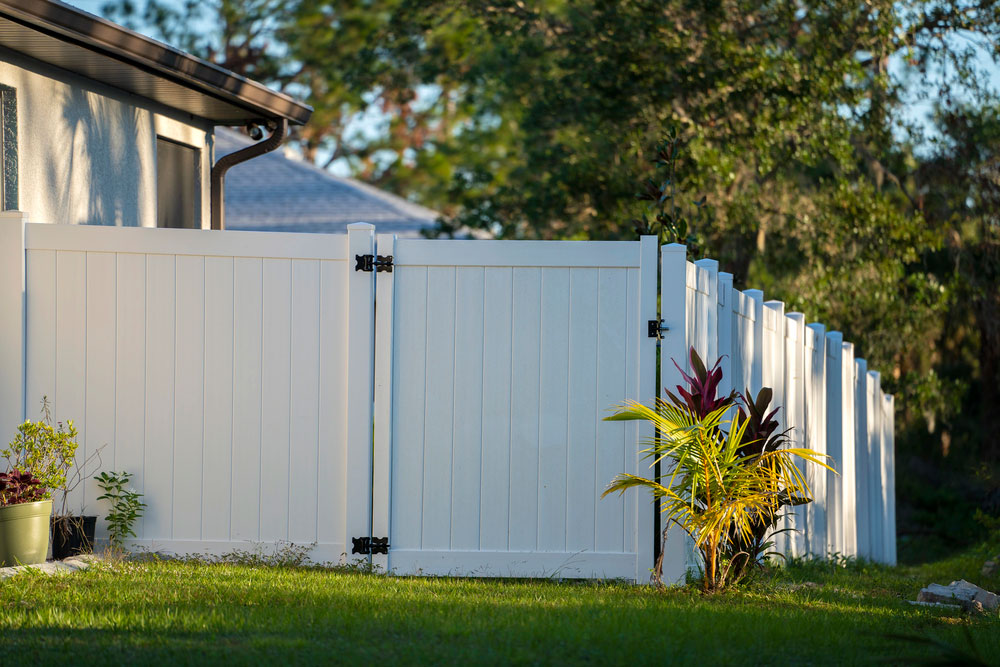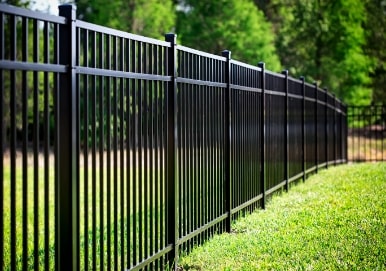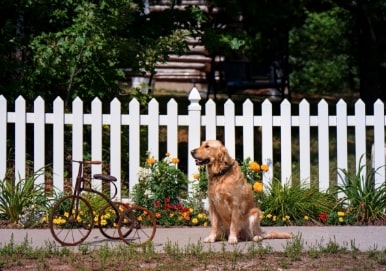like wood, and they hold up well against insects and moisture. However, even vinyl fencing has its limits.
Over time, weather, shifting ground, or poor installation can lead to problems. These issues may seem small at first, but they often get worse without proper repairs. Here, let’s look at the most common vinyl fence problems and why calling a professional is usually the smartest move.

Cracking in Cold Weather
Vinyl becomes more brittle when temperatures drop. In winter, small impacts—like a ball hitting the fence or a heavy wind—can cause cracks. This is especially true for lower-grade vinyl. A crack might not seem like a big deal, but it can quickly grow and lead to full panel failure. Replacing a single damaged panel the right way takes more than just snapping in a new one.
Warping From Sun and Heat
Direct sunlight wears on vinyl fences over time. Constant UV exposure can cause fading, discoloration, or warping. This is common on fences that don’t have built-in UV protection. Warping can make your fence panels bow or lean and make the fence look uneven. Replacing warped pieces can be challenging, especially if the posts were installed at different angles.
Leaning Fence Posts
When fence posts start to lean, the whole structure becomes unstable. This often happens when the posts weren’t set deep enough or weren’t anchored properly in the ground. Heavy rain and shifting soil can make the problem worse. A leaning fence might still stand, but it won’t be strong for long. Fixing it usually means digging up the old post and resetting it in fresh concrete.
Broken or Loose Rails
Fence rails are the horizontal pieces that connect the posts and hold the panels. They can break due to impact, strong wind, or poor installation. If they become loose, the panels may sag or fall out completely. Sometimes, clips or fasteners wear out or snap. Reattaching rails without damaging nearby panels takes skill and the right tools.
Mold and Mildew Stains
While vinyl is highly resistant to rot, it can still be susceptible to mold and mildew in certain conditions. In areas that are shaded or consistently damp, you might notice green or black spots forming.
These stains can detract from the fence’s appearance, and over time, the buildup may affect its surface integrity. Regular cleaning, such as power washing, can help maintain its appearance, but it’s important to use the proper techniques to avoid causing any damage.
Gate Problems
Gates are often the most vulnerable part of a fence. Over time, they may experience sagging, difficulty closing, or issues with latching. The repeated movement and pressure on the hinges can cause wear and tear.
If the gate becomes misaligned, it may not close properly. Addressing this issue may require rehanging the gate, adjusting the posts, or replacing worn hardware to restore functionality.
Sloped Ground and Fence Gaps
When building a fence on sloped ground, there are certain challenges that must be addressed carefully. If the installer doesn’t properly account for the slope, gaps can appear at the bottom of the panels. These gaps can not only affect the appearance of your fence but may also create safety concerns by allowing pets to escape or wildlife to enter your yard.
To avoid this, two main installation methods—stepping or racking—are used. Both require precise measurements and careful planning. One of the common reasons for early vinyl fence failure is improper installation on uneven ground.
Why DIY Repairs Often Backfire
While it’s tempting to try fixing your fence on your own, vinyl can be trickier to work with than expected. Panels and posts are designed to fit together in specific ways. One incorrect cut or forced connection can end up causing more damage.
You may think you’ve made the repair, but after the next storm, you could find the fence leaning again. Additionally, some issues, like a cracked post underground or a rail that’s starting to split, may not be visible right away. Professionals can spot these problems early and handle repairs correctly, preventing further damage down the road.
What Professionals Bring to the Job
Fence repair professionals have the expertise, tools, and training to get the job done correctly. They are skilled at matching replacement parts, resetting posts properly, and identifying hidden damage that may not be immediately obvious. They also understand how local weather conditions and soil types in Virginia can affect the performance of your fence.
Rather than spending your weekend digging post holes or trying to match old vinyl, it’s worth letting a professional handle the job. With their experience, your fence will not only last longer but will look better and stand up to the elements more effectively.
When It’s Time to Replace the Fence
Sometimes, fences simply can’t be repaired. If your vinyl fence has multiple cracks, broken rails, or large sections that are leaning, it might be time for a full replacement. This is especially true if your fence is older and finding replacement parts has become difficult.
A trusted fence contractor can assess the damage and provide honest, professional advice about your replacement options.
A Better Fence Starts with the Right Team
At Good Neighbor Fence, we’ve been building and repairing fences in Richmond, Fredericksburg, and Williamsburg since 2006. We’re a family-owned business with strong ties to the community. Our team never uses subcontractors—we believe your fence should be built by people who care about the quality of their work.
We specialize in vinyl, chain link, aluminum, and custom wood fencing. Whether you need a small repair or a full new installation, we bring the experience and attention to detail your property deserves.
Get a quote today.





